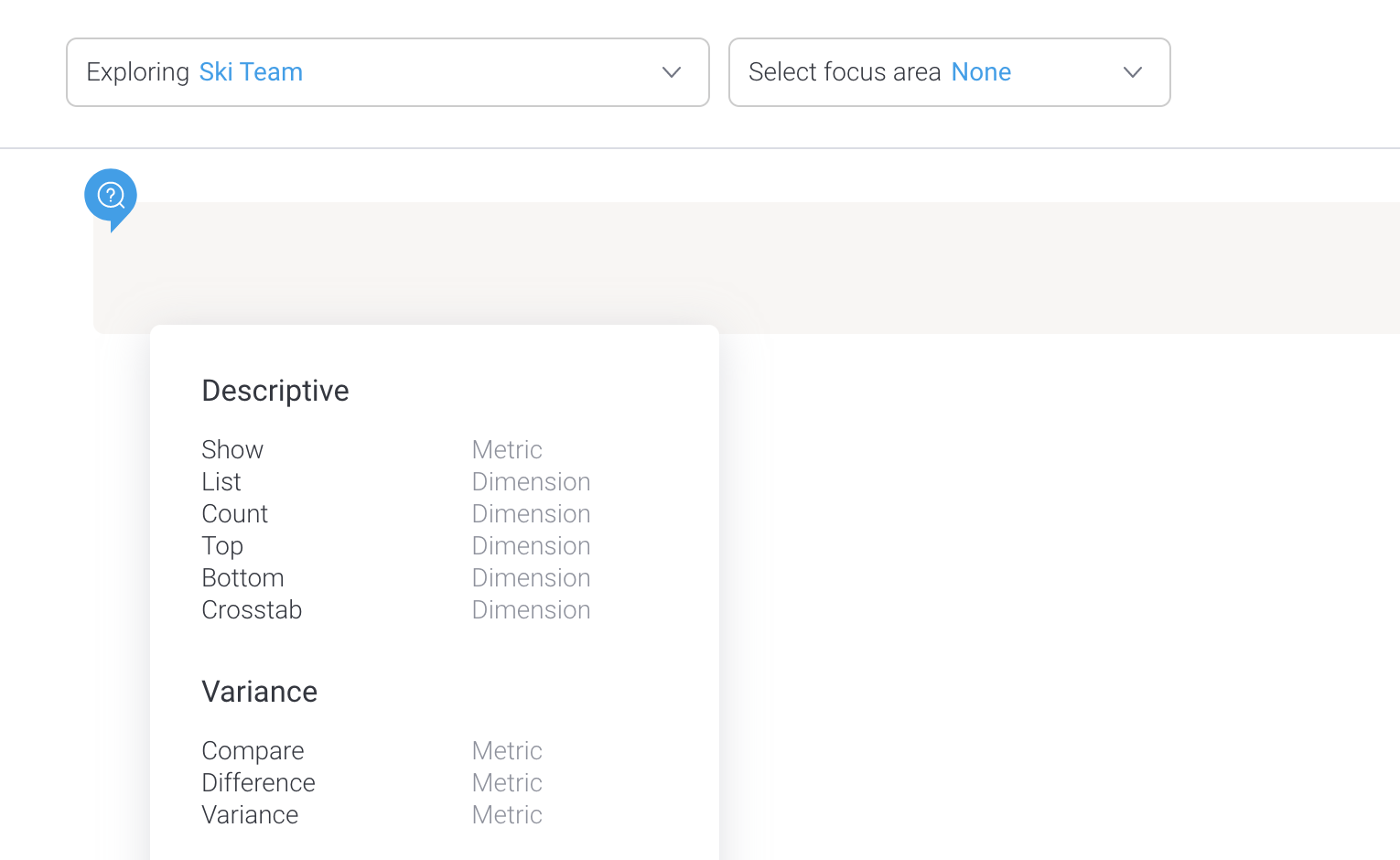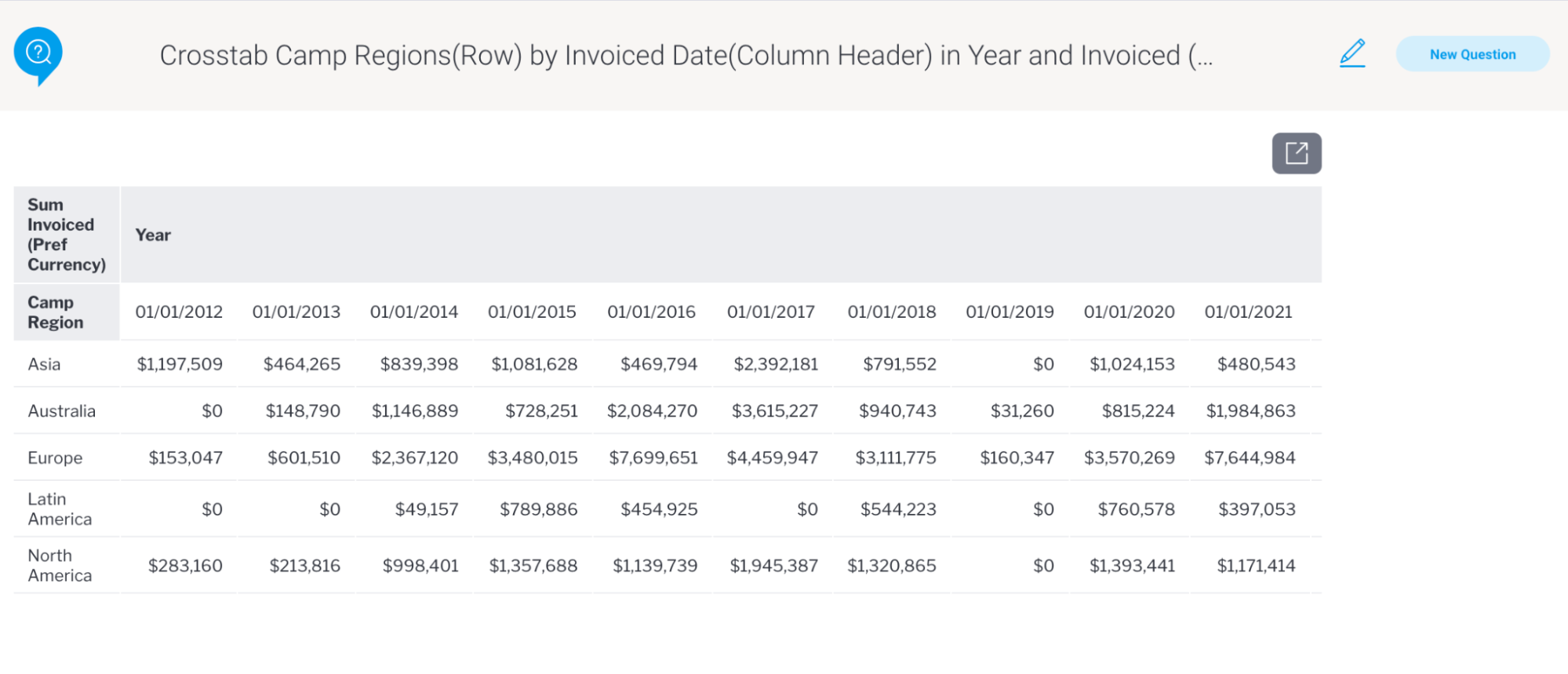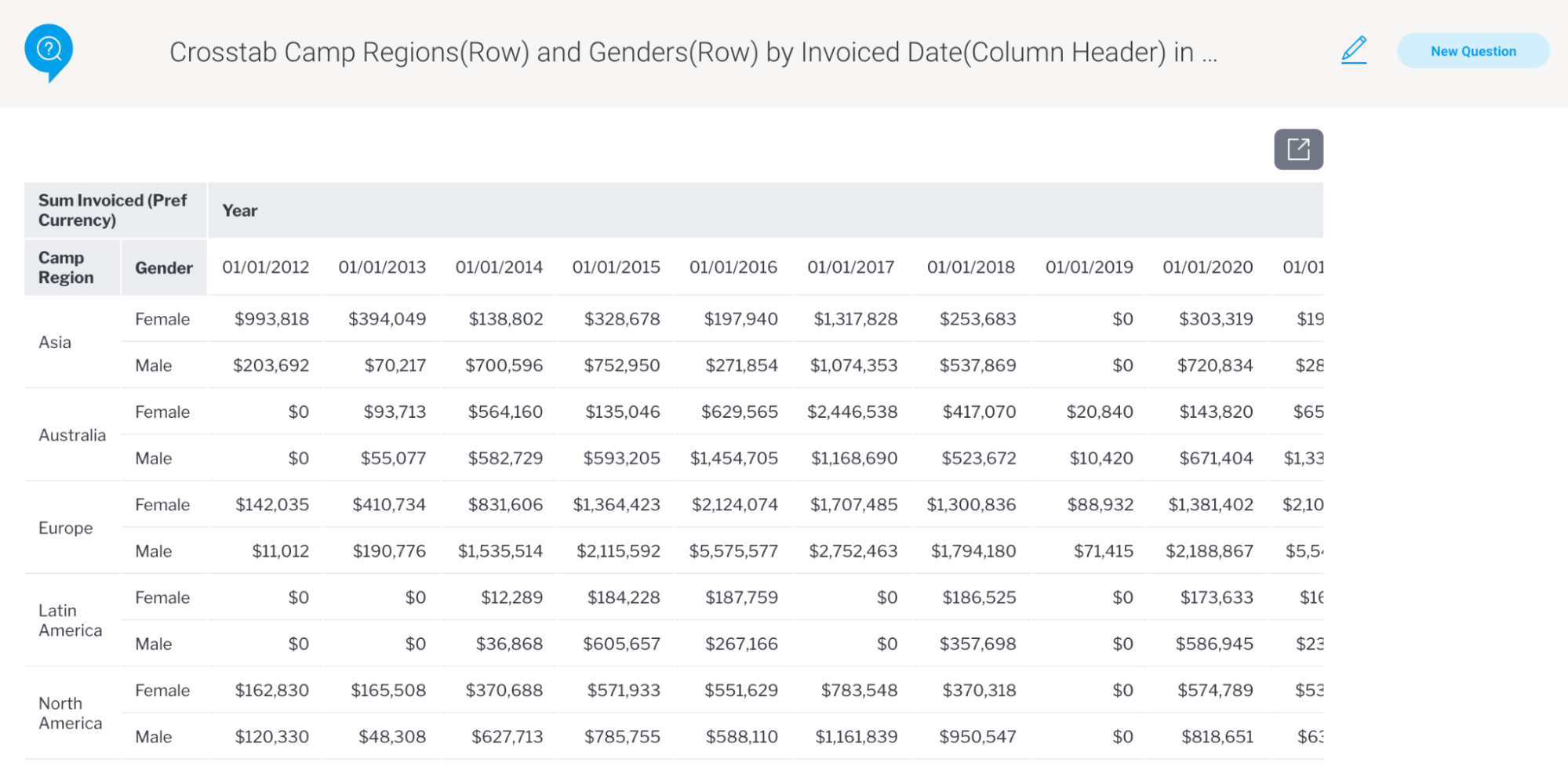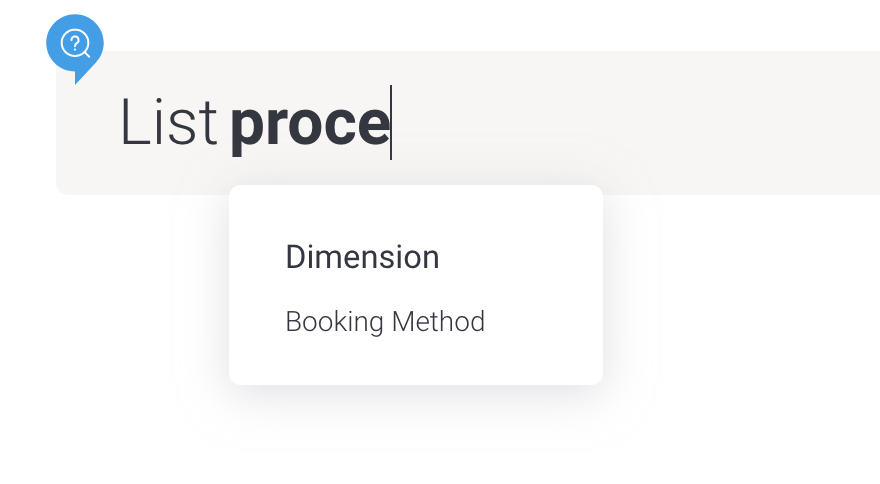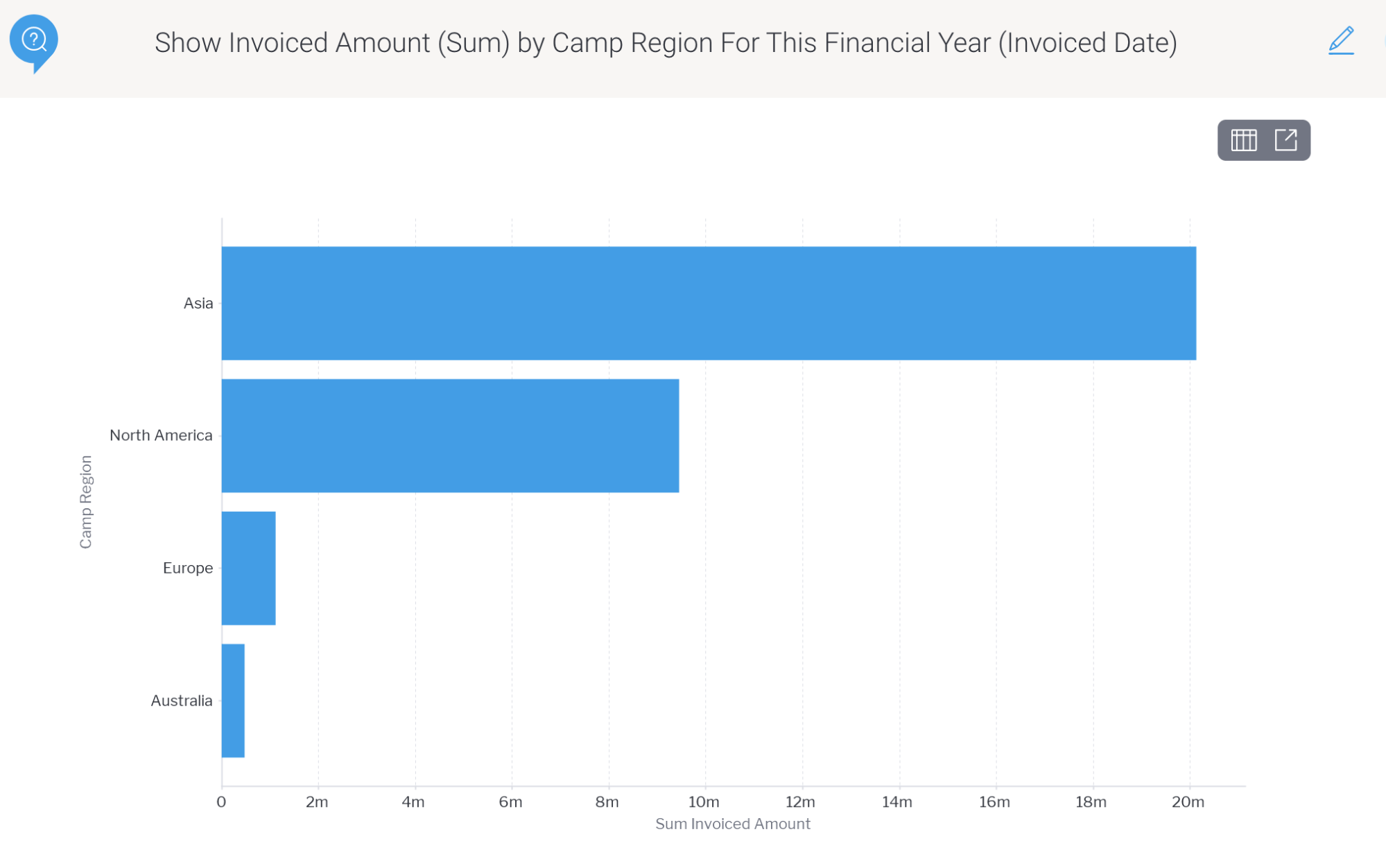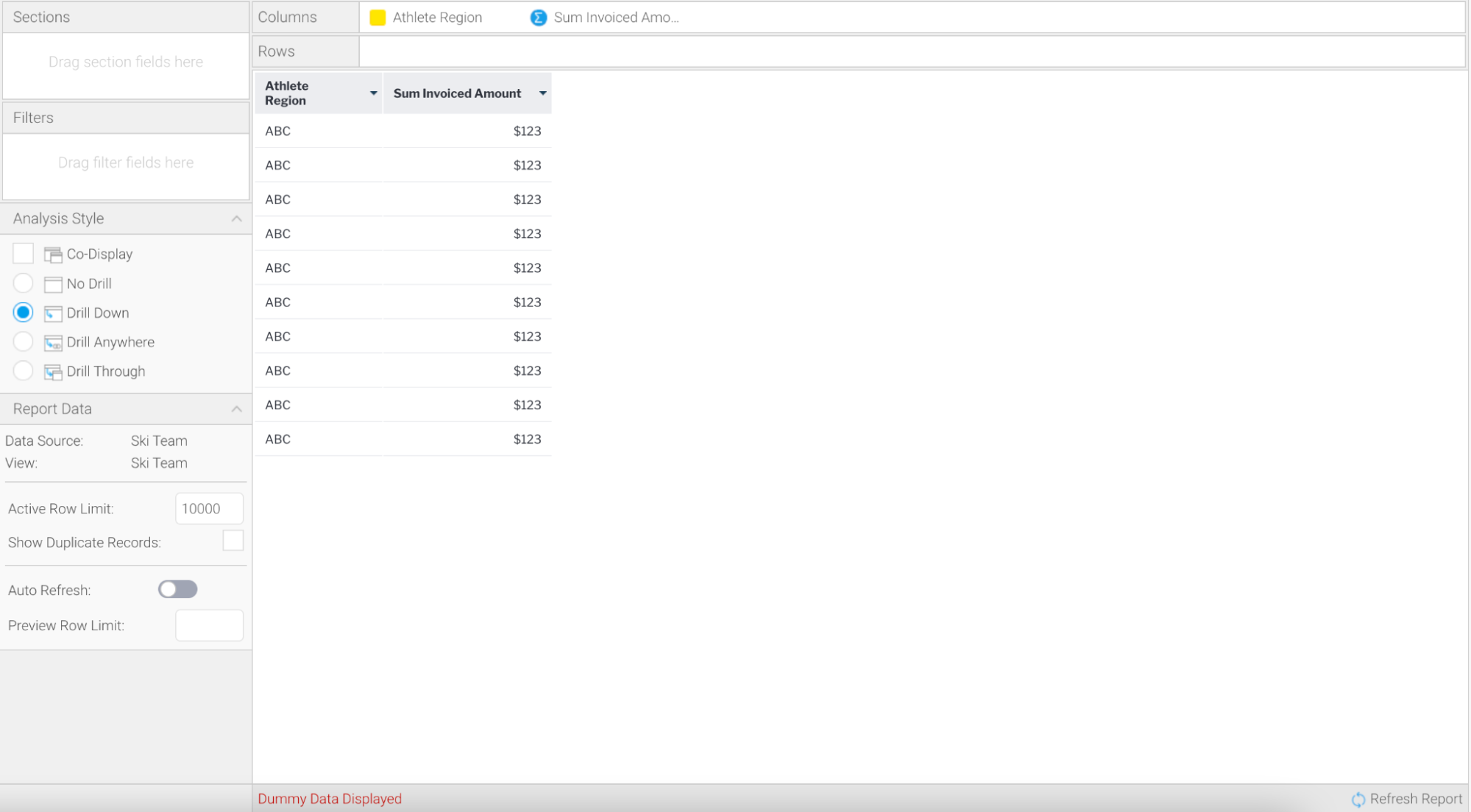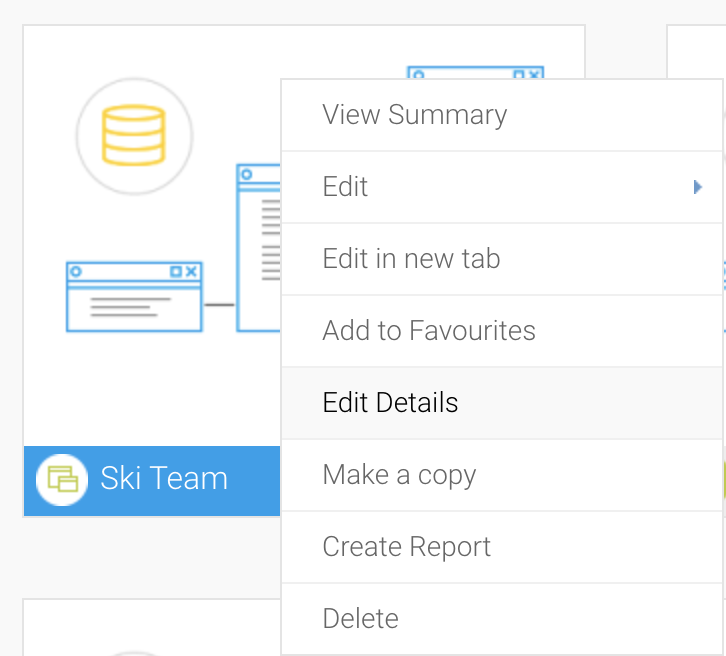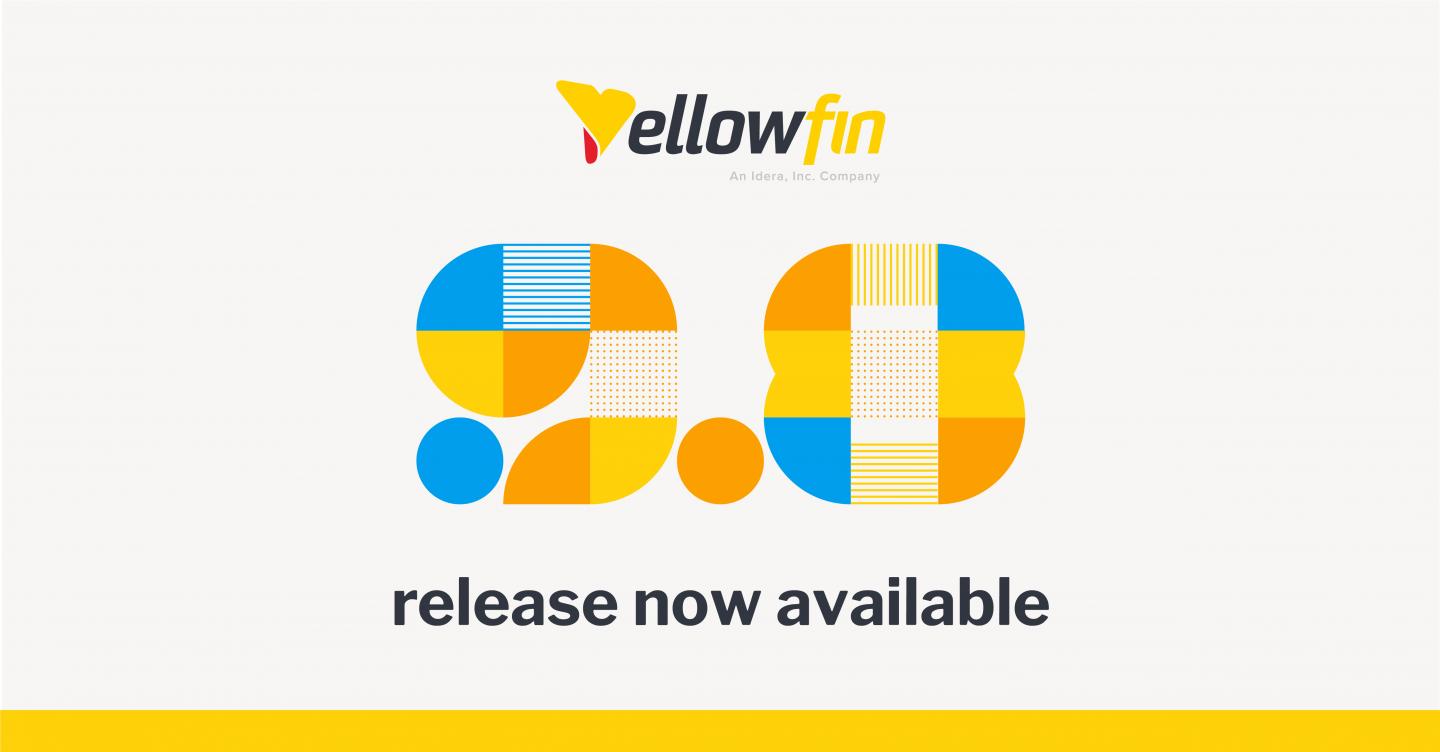
Yellowfin 9.8 Release Highlights
With updates to our Guided Natural Language Query (NLQ) capability, Yellowfin 9.8 is a must-have update to further enhance your application’s self-service analytics experience.
Introduced in 9.7 as the simplest way to ask questions of your data, Yellowfin 9.8 delivers exciting updates to Guided NLQ, and additional improvements to our report builder.
The latest release makes Guided NLQ even more powerful and simpler to use, with new question types (Cross-tab), more intuitive questions with field synonyms and default date periods, and protection against long-running queries - in addition to faster report building.
In this blog, we cover some of the biggest highlights in the 9.8 release. For the full list of updates, please visit our release notes page.
Ask a question to generate a cross-tab report
Crosstab reports are one of the most common and useful types of tabular reports. They allow a user to view metric data sliced by dimensions appearing in both rows and columns. The 9.8 release now allows Crosstab questions to be asked in Guided NLQ using the Crosstab keyword.
Remember that Guided NLQ steps you through the process, so there is no need to learn or memorize specific syntax. Below, we illustrate an example of Crosstab in action:
You can now simply type ‘Crosstab’, or select it from the suggestions in the drop-down menu. From there, you can select or type the dimension or date fields you would like to see in the rows, and the dimension or date fields you would like to see in your column, as well as the key metric for the report. Your cross-tab report is then generated.
You can also include two fields in your row definition, for a more complex cross-tab report, as shown in the image below.
As with all reports generated from Guided NLQ, the results can be immediately added to a Story, Dashboard or Presentation, or the report can be opened in the Advanced Report Builder for further refinement.
Support for Field Synonyms
To make Guided NLQ even more intuitive to use, we have added the ability to create synonyms for fields, so your users don’t have to remember the specific name of a field in order to use it in a question.
When typing a field name into the question bar, Yellowfin will suggest matching fields based on both the field name, as well as any synonyms created for that field. Synonyms can be set up in the Automation Settings for a View, as illustrated below.
You can add one or more synonyms per field. In this example, we have created the synonyms ‘Style’ and ‘Process’ for the ‘Booking Method’ field. When your analytics user is prompted for a field name in Guided NLQ, typing Process will automatically match the field Booking Method.
Recommended Reading: An Introduction to Guided NLQ - What is it?
Guided NLQ Query cancellation
Depending on the volume of your data, the performance of your database and the specific question being asked, it might be possible to ask a question that could run for a long-time, possibly tying up valuable computing resources.
In this release, long-running queries initiated from Guided NLQ are detected and users are prompted to cancel the query. This will also cancel the query on the database server.
NLQ for views without date fields
Whilst the majority of reporting databases contain a date, not all do. The first release of NLQ required users to provide a date range, meaning that NLQ could not be used on views that did not contain a date.
In this release, we have changed that requirement and you can now enable Guided NLQ on a view without having to specify a data field.
Related Reading: 5 Benefits of Guided NLQ
Auto-population of the Date Period
Many Yellowfin users ask questions about common time periods, such as, performance for the current month, or the last week. It is now possible in Guided NLQ to set a default date period for a view, and to have this auto-populate in a question when a date is not otherwise specified.
This can be setup in the Automation Settings for a View, as shown below.
Any standard Yellowfin date period can be selected as the default. You can also select a custom date period if none of the pre-defined periods are suitable. In this example, we set the default period to ‘This Financial Year’.
Now, if you ask a question using Yellowfin Guided NLQ and do not specify a date, such as in the above example, Yellowfin will automatically append the default date restriction to the question.
Setting a default date also serves as a safeguard to users asking questions that might result in very long running queries, particularly if your reporting database contains a lot of historical data.
In addition to our Guided NLQ enhancements, our report builder has received several quality-of-life improvements. One such improvement is for the auto-run setting.
Previously, a user could set a toggle on the data tab of the report builder to disable automatic query running. If this toggle was set, the report builder displayed sample data rather than actual data. This allowed the user to build the report without having to wait for the data to refresh after each step. Once the report was ready the report could be run by clicking ‘Refresh Report’.
However when clicking on the charts tab for the first time, the auto-run setting was not carried through and the query would always run.
From 9.8, the auto run toggle is now shared between the ‘Data’ tab and the ‘Charts’ tab. Report Builders can now build the report query itself, as well as the charts, and the data will only be refreshed from the database when the user clicks Refresh Report.
This change has also been extended to the design page, giving report builders full control as to when database queries will be run.
Making the update of View Details easier and quicker
In previous versions of Yellowfin, view configuration could only be updated by placing the View into edit mode or taking a clone of an existing view. This was necessary to protect the integration of currently published reports. For very large views, this process could be quite time consuming.
From version 9.7, we introduced the ability to update non-data model view configuration directly from the browse page, including Automation, Security and Performance Settings. In 9.8, we have added the ability to update the view name, description and folder location without having to edit the view; this can be done by accessing the ‘Edit Details’ menu option when you right click on a view in the browse page.
Have your long running report sent to you in the format of your choice
Yellowfin conveniently detects long-running reports, and will prompt the user if a report exceeds the pre-configured wait time. The user has the option to continue to wait, to cancel the report or to have the report sent to them. Choosing the latter option would previously always send the report in a readable HTML format.
Administrators can now choose the format in which long running reports will be sent. This can be accessed from Administration / Content Settings.
What else is new in Yellowfin 9.8?
The enhancements for Guided NLQ and Report Builder we've covered in this blog are just some of the many improvements 9.8 brings to the table. We encourage you to read the full release notes, and discover why this Yellowfin update is a must-have for your users.
